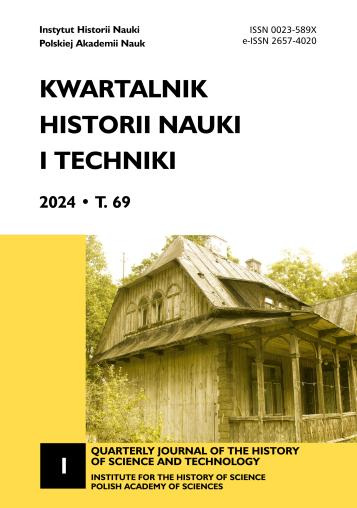Leśniczówka Kaczew (Szwedówka) – dawny dwór myśliwski Radziwiłłów oraz rys historyczny leśnictwa dóbr nieborowskich
Kaczew Forester’s Lodge (‘Szwedówka’) – Former Radziwiłł Hunting Lodge and Historical Outline of the Nieborów Estate Forestry
Author(s): Andrzej Cichy, Zbigniew TucholskiSubject(s): History, Cultural history, Ethnohistory, Local History / Microhistory
Published by: Wydawnictwo Uniwersytetu Jagiellońskiego
Keywords: Aleksander Szwede; Bolimów Large Forest; Radziwiłł Estate; Nieborów Estate; landed estates; forestry; hunting lodge; wooden architecture; summer residences; forest architecture; Zakopane region; Zakop
Summary/Abstract: This monographic study focuses on the history of the construction and functioning of ‘Szwedówka,’ a wooden hunting lodge in the Radziwiłł estate in the Nieborów Forests. The building, erected through the efforts of Fr. Michał Piotr Radziwiłł , was initially utilized by the Warsaw industrialist and avid hunter Aleksander Szwede but later underwent various changes. Originally serving as a representative hunting lodge near the forester’s lodge of the Nieborów Estate, it later became a post-war forester’s lodge after a fire incident. The last forester of the Radziwiłł family, Stanisław Hruszka, resided there until the mid-1970s when it became the headquarters of Kaczew Forestry. Subsequently, the family of the final forester, Włodzimierz Bogaciński, lived there. The study places the creation and functioning of the facility within the broader context of the history of forestry in the Nieborów Estate. The narrative presents extensive biographies of individuals associated with the Estate. Aleksander Szwede emerges as a crucial figure in the development of Polish food and metal industries. He is also known for his role as a social activist and patriot. A significant aspect of the study comprises the technical and conservation description of the building. Preceded by a formal and stylistic analysis, this section narrows down the period of its construction to approximately 1900–1902. This is essential due to the lack of sources enabling the determination of authorship of the design and the date of construction. The manor’s design incorporates elements reminiscent of both regional and Zakopane solutions, making it an object of considerable historical and aesthetic value. In 2020, the Łódź Conservator, recognizing its significance, included ‘Szwedówka’ in the register of monuments of the Skierniewice district. Despite this, this unique monument of wooden construction, currently managed by the Skierniewice Forest District, is in poor technical condition. The most important conservation postulate of this study is the need to quickly secure the facility and place it under conservation protection by entering it in the register of monuments. This lays the groundwork for the actual conservation efforts aimed at preserving the monument in situ or, as a secondary consideration, its relocation to the Łowicz Ethnographic Park in Maurzyce.
Journal: Kwartalnik Historii Nauki i Techniki
- Issue Year: 2024
- Issue No: 1
- Page Range: 9 - 66
- Page Count: 58
- Language: Polish

